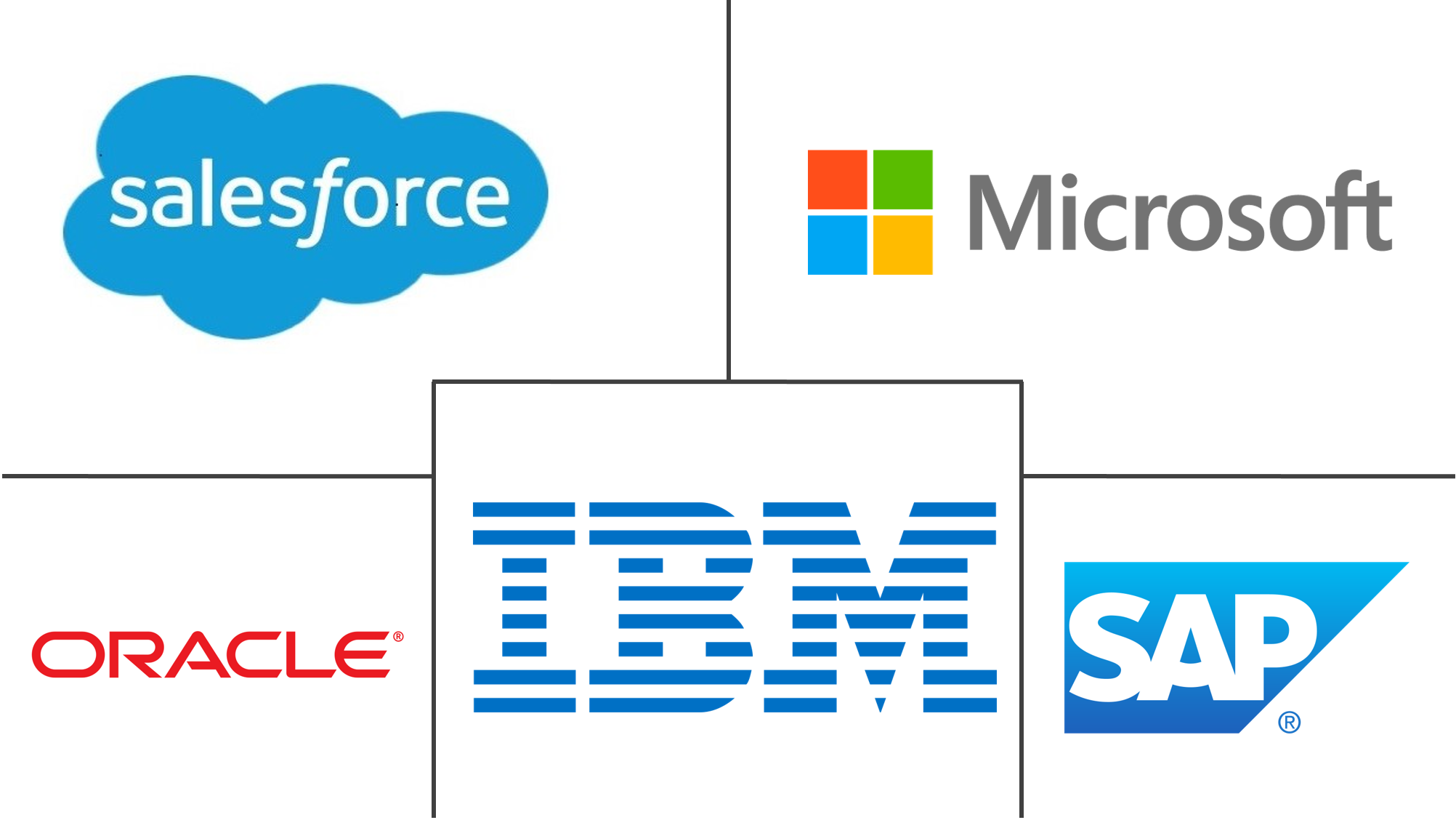Enterprise Service Bus Software Market Size and Share
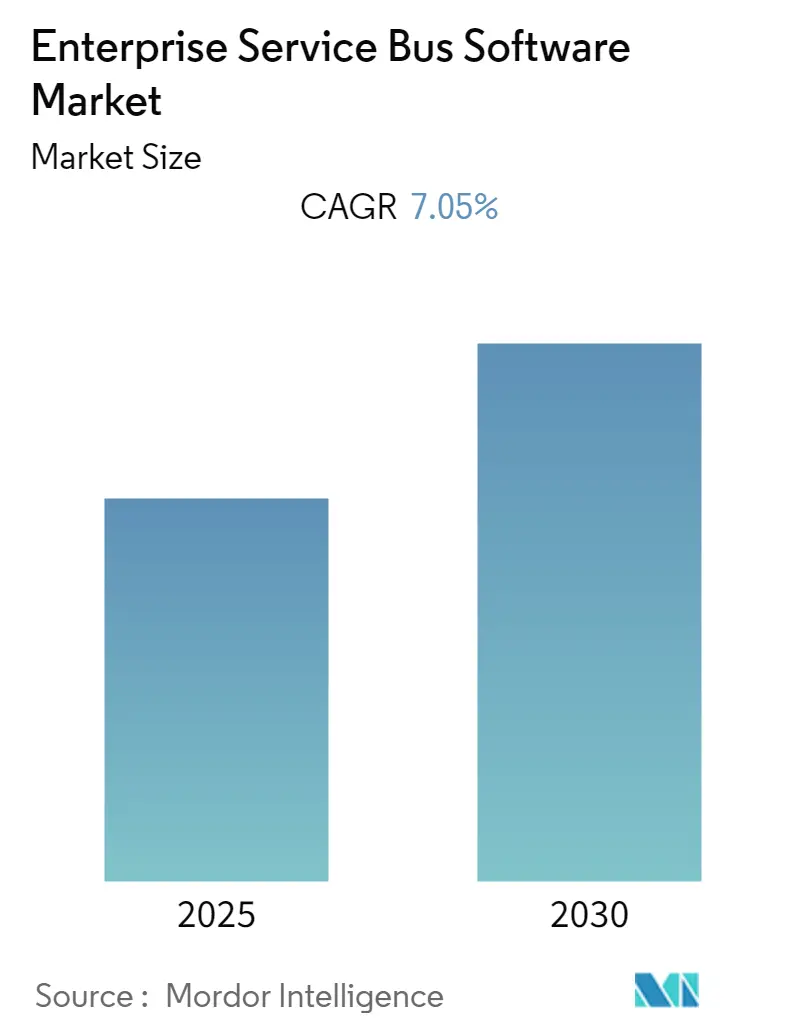
Enterprise Service Bus Software Market Analysis by Mordor Intelligence
The Enterprise Service Bus Software Market is expected to register a CAGR of 7.05% during the forecast period.
- The COVID-19 outbreak demonstrated the value of business intelligence, analytics, cloud computing, and mobile computing for ensuring that organizations run smoothly. After this, companies started using these services to improve their work architecture. This was the turning point for enterprise service bus software in the market.
- ESB architecture distributes information across enterprises quickly and ensures the smooth delivery of information, even when some networks or systems are offline occasionally, by eliminating the need to rewrite the application. Thus, most companies implement the ESB architecture as the backbone of their IT infrastructure.
- Furthermore, majorly driven by the adoption of cloud platforms that serve as a way to integrate various applications and can facilitate new and expanded channels as well as improve access to client data, allowing for better-tailored products and services, the IT and telecom industries are expected to mark a significant rise in the use of ESBs.
- Banks are also moving more of their data, processes, and infrastructure to the cloud to take advantage of cloud implementation, which makes it easier for enterprise applications to work together.For instance, the State Bank of India, for its 23,000 branches, chose Office 365, a cloud-powered productivity solution from Microsoft, to improve communication and collaboration among its workforce and transform it into a modern workplace.
- Older businesses that keep their data on paper will take some time to move to the cloud, which could sometimes affect how the business works. They will also have to change parts of the data at a time instead of all of it at once. Concerns about the high cost of installation are also a threat to the growth of the market.
Global Enterprise Service Bus Software Market Trends and Insights
Rising Development of IoT Projects Boosting the Market Growth
The number of IoT-connected devices is expected to increase from 8.6 billion in 2019 to 29.4 billion in 2030. The growth of connected devices is driven by new applications and business models, and it is helped by the fact that devices are becoming more standard and their prices are going down.
As the number of IoT-connected devices increases, the integration of devices and data becomes more complex. These connected devices may present numerous integration and messaging challenges. Organizations, thus, may have to invest in efficient application integration solutions that can be tackled with ESBs.
Also, as there are more and more devices that connect to each other, it is becoming more and more important to manage multiple networks and systems at the same time.The easiest way to deal with this problem is to concentrate on a strategy that involves synchronizing various devices (each with a distinct protocol) on a single application platform.
Over the next few years, demand for ESB software is likely to be driven by the need to handle communication between different devices in a more effective and flexible way as business environments change.
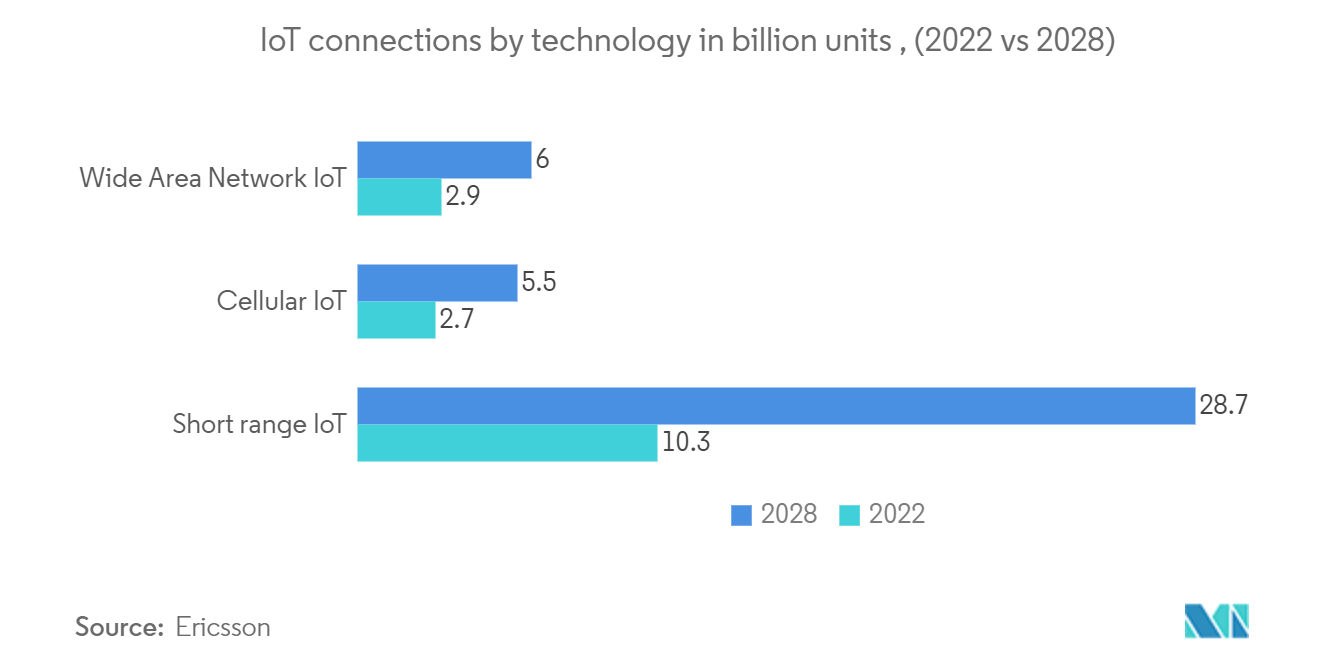
Asia-Pacific to Register a Significant Growth Over the Forecast Period
Asia-Pacific is predicted to have the quickest growth rate for the Enterprise Service Bus Software Market due to the region's expanding emphasis on the IoT platform in nations like China, India, and South Korea.
The rising demand for managed cloud-based solutions has also increased in this region due to complex big data and workloads, such as enterprise resource planning (ERP), being increasingly migrated to cloud platforms. According to a report published by the Asia Cloud Computing Association (ACCA), Singapore is the number one cloud-ready Asia-Pacific country, owing to better broadband quality, cybersecurity, regulation, and business sophistication.
As most businesses in Asia-Pacific move their operations to the cloud, companies like Alibaba and Tencent are likely to use ESBs to make their organizations more flexible by reducing the time it takes for new projects to reach the market.
It also builds and designs applications that are more flexible, which lets companies respond quickly to changes in the market. The ESB software market in the region is also likely to grow because of these factors.
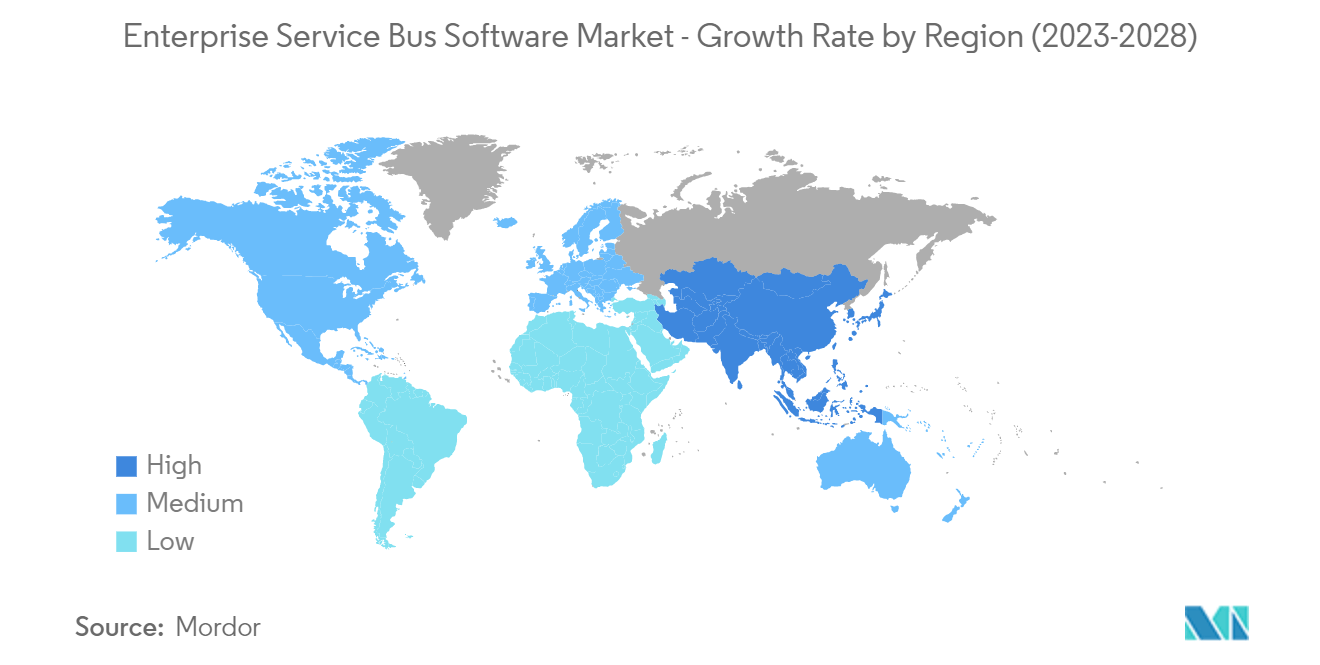
Competitive Landscape
Due to the proliferation of vendors, the enterprise service bus software industry is fragmented. Rapid development, innovation, and intense player competition are what are driving the ESB software market. In addition to others, some of the major companies are Oracle Corporation, Microsoft Corporation, IBM Corporation, SAP SE, MuleSoft Inc. (Salesforce), Dell Technologies Inc., and TIBCO Software Inc.
In December 2022, Red Hat and General Motors joined to assist the car industry player in integrating cutting-edge software technology into its offerings. Both businesses can quickly provide clients with additional valuable features because of Red Hat's cloud-native technology. This software will support several in-vehicle safety applications, like sophisticated driver assistance systems, body control, and connection, since high levels of cybersecurity protection are necessary for in-vehicle software. Linux and cloud-native technology will speed up innovation processes through open source.
Enterprise Service Bus Software Industry Leaders
-
Oracle Corporation
-
Microsoft Corporation
-
IBM Corporation
-
SAP SE
-
Salesforce.com Inc. (MuleSoft Inc. )
- *Disclaimer: Major Players sorted in no particular order
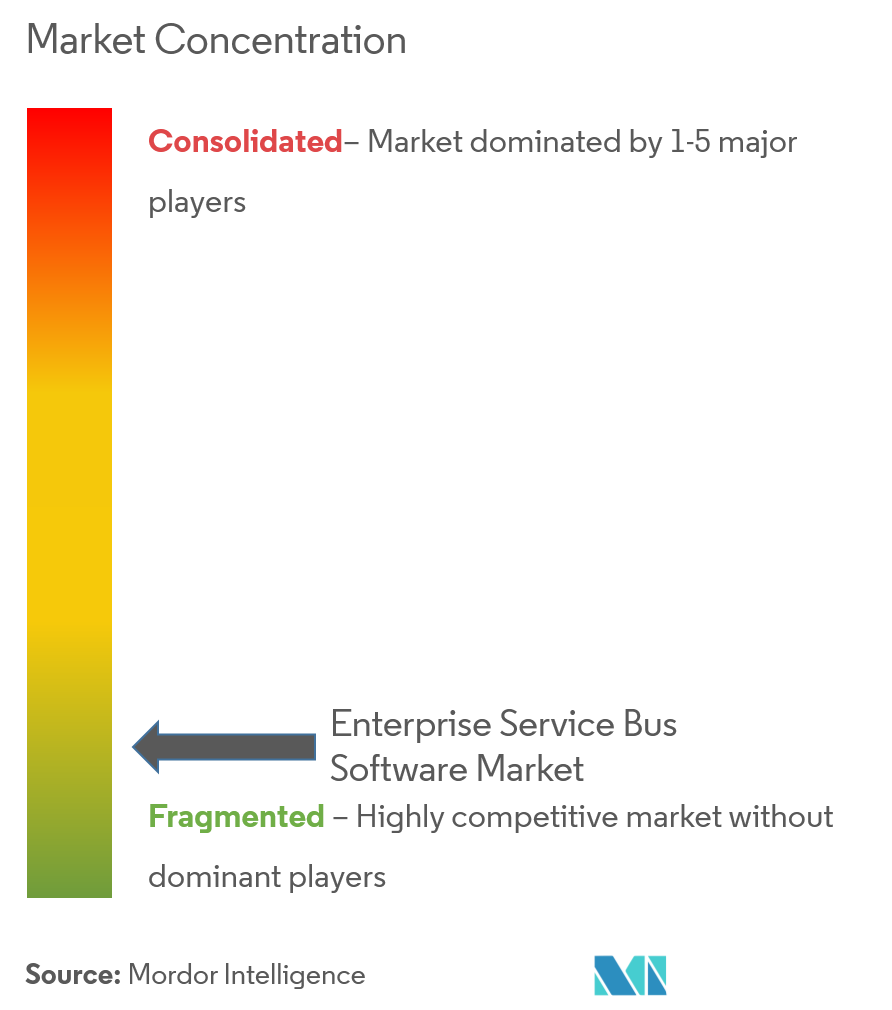
Recent Industry Developments
- October 2022: Red Hat's Openshift Dedicated Solution, which operates on the AWS cloud, was adopted by Westech, a digital marketing agency in the UK. 50 Westech employees and two Red Hat programmers finished a three-day Open Shift hackathon in a trail race. Westech will be able to meet new market demands with the aid of this solution and its innovative and astute concepts. High traffic demands may be met quickly and affordably.
- February 2023 : Pimly, a Chicago-based startup that offers a product information management solution, invested $5 million to break down data silos by making Salesforce the primary source for vital product information, empowering staff members, prospects, partners, and clients to become subject matter experts in their respective product categories.
Global Enterprise Service Bus Software Market Report Scope
The enterprise service bus (ESB) is one of the best ways to connect applications and services so that end users only have to deal with a single, consistent, and reliable interface.It does this by offering crucial services for more complicated architectures. By connecting all of these programs through a communication bus, ESB combines applications, manages resources, and manipulates data. Moreover, it offers the framework required to develop tools for translation, routing, and other types of integration. Because the systems or networks are separated by the ESB, they can connect without being aware of or dependent on other systems on the bus.
The enterprise service bus software market is segmented by deployment (on the cloud and on-premise), end-user industry (IT and telecom, healthcare, and BFSI), and geography.
The market sizes and forecasts are provided in terms of value (USD million) for all the above segments.
| On Cloud |
| On-premise |
| IT and Telecom |
| Retail |
| Healthcare |
| BFSI |
| Other End-user Industries (Government, Manufacturing, and Utilities) |
| North America |
| Europe |
| Asia-Pacific |
| Latin America |
| Middle East & Africa |
| Deployment | On Cloud |
| On-premise | |
| End-user Industry | IT and Telecom |
| Retail | |
| Healthcare | |
| BFSI | |
| Other End-user Industries (Government, Manufacturing, and Utilities) | |
| Geography | North America |
| Europe | |
| Asia-Pacific | |
| Latin America | |
| Middle East & Africa |
Key Questions Answered in the Report
What is the current Enterprise Service Bus Software Market size?
The Enterprise Service Bus Software Market is projected to register a CAGR of 7.05% during the forecast period (2025-2030)
Who are the key players in Enterprise Service Bus Software Market?
Oracle Corporation, Microsoft Corporation, IBM Corporation, SAP SE and Salesforce.com Inc. (MuleSoft Inc. ) are the major companies operating in the Enterprise Service Bus Software Market.
Which is the fastest growing region in Enterprise Service Bus Software Market?
Asia-Pacific is estimated to grow at the highest CAGR over the forecast period (2025-2030).
Which region has the biggest share in Enterprise Service Bus Software Market?
In 2025, the North America accounts for the largest market share in Enterprise Service Bus Software Market.
What years does this Enterprise Service Bus Software Market cover?
The report covers the Enterprise Service Bus Software Market historical market size for years: 2019, 2020, 2021, 2022, 2023 and 2024. The report also forecasts the Enterprise Service Bus Software Market size for years: 2025, 2026, 2027, 2028, 2029 and 2030.
Page last updated on:
Enterprise Service Bus Software Market Report
Statistics for the 2025 Enterprise Service Bus Software market share, size and revenue growth rate, created by Mordor Intelligence™ Industry Reports. Enterprise Service Bus Software analysis includes a market forecast outlook for 2025 to 2030 and historical overview. Get a sample of this industry analysis as a free report PDF download.
